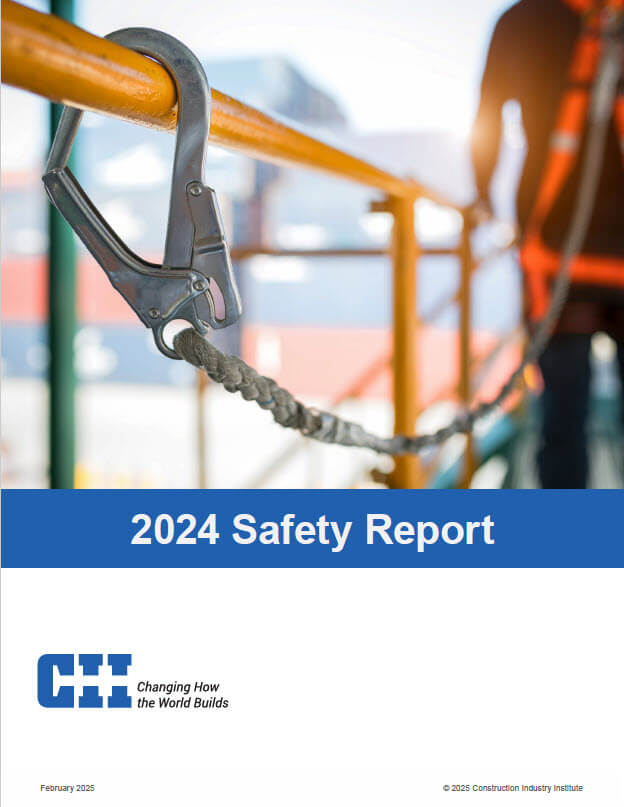2023 Safety Summary Report Version 1.1
CII has collected annual corporate safety performance data from its member organizations since 1990 as part of its long-term commitment to improving safety in the construction industry. This 2023 report summarizes safety rates of 2022 calendar year reported by CII members only.
Survey Instrument
The safety survey gathers data by industry sector, location, and employee type. The main data entry fields include:
- Total Work Hours
- Total Recordable Incident Cases
- Days Away and Restricted or Transferred (DART) Cases
- Days Away (DA) Cases
- Total Number of Days Associated with Days Away (DA) Cases
- Total Number of Days Associated with Job Restriction or Transfer (RT) Cases
- Number of Fatalities
In addition, the survey includes questions regarding near misses, first aid cases, and fatalities. All the rates presented in this report follow OSHA’s definitions, which are available in the OSHA 300 form.
Survey Scope and Potential Limitations
Respondents (both owners and contractors) were asked to provide safety data for both their direct-hire employees and their contractors’ employees. However, because contractors were not uniquely identified in the owner responses, some double reporting of contractor data is possible. This overlap often presents itself in two ways:
- Owners reporting on their contractors’ employees
- Contractors reporting on their direct-hire employees
CII uses definitions for its industry groups that differ from both the system OSHA currently uses – the 2002 North American Industrial Classification System (NAICS) – and the Standard Industrial Classification (SIC) system that OSHA used prior to 2003. The construction industry divisions of NAICS and SIC system consist of three major groups:
- General Building (NAICS 236 and SIC 15)
- Heavy Construction except for Buildings (NAICS 237 and SIC 16)
- Special Trade Contractors (NAICS 238 and SIC 17)
CII data do not include residential construction, which is included in OSHA’s “General Building” category.
CII collects safety data related (only) to capital projects, excluding operations and maintenance. This is particularly important for owners reporting their safety data.


